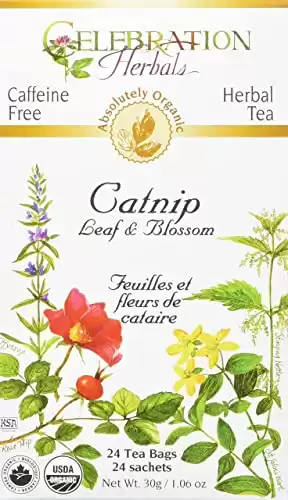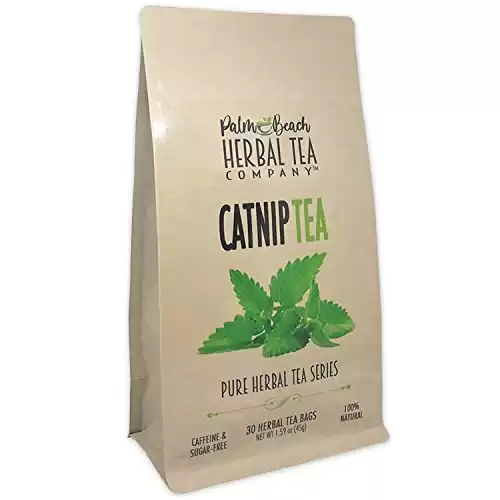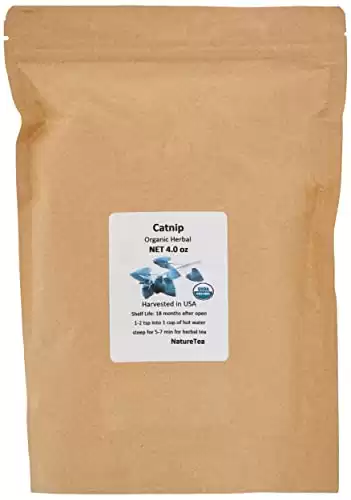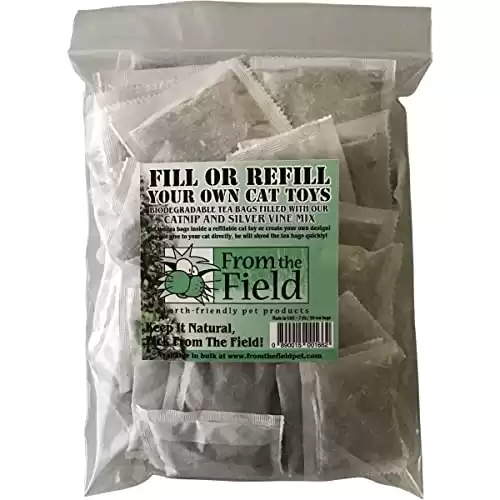My cat seems to enjoy catnip. I’ve even made catnip tea for cats. I’ll show you how to make catnip tea for cats. I will also share with you some of the history and science behind the herb. What makes cats love it so much and will humans get just as high?
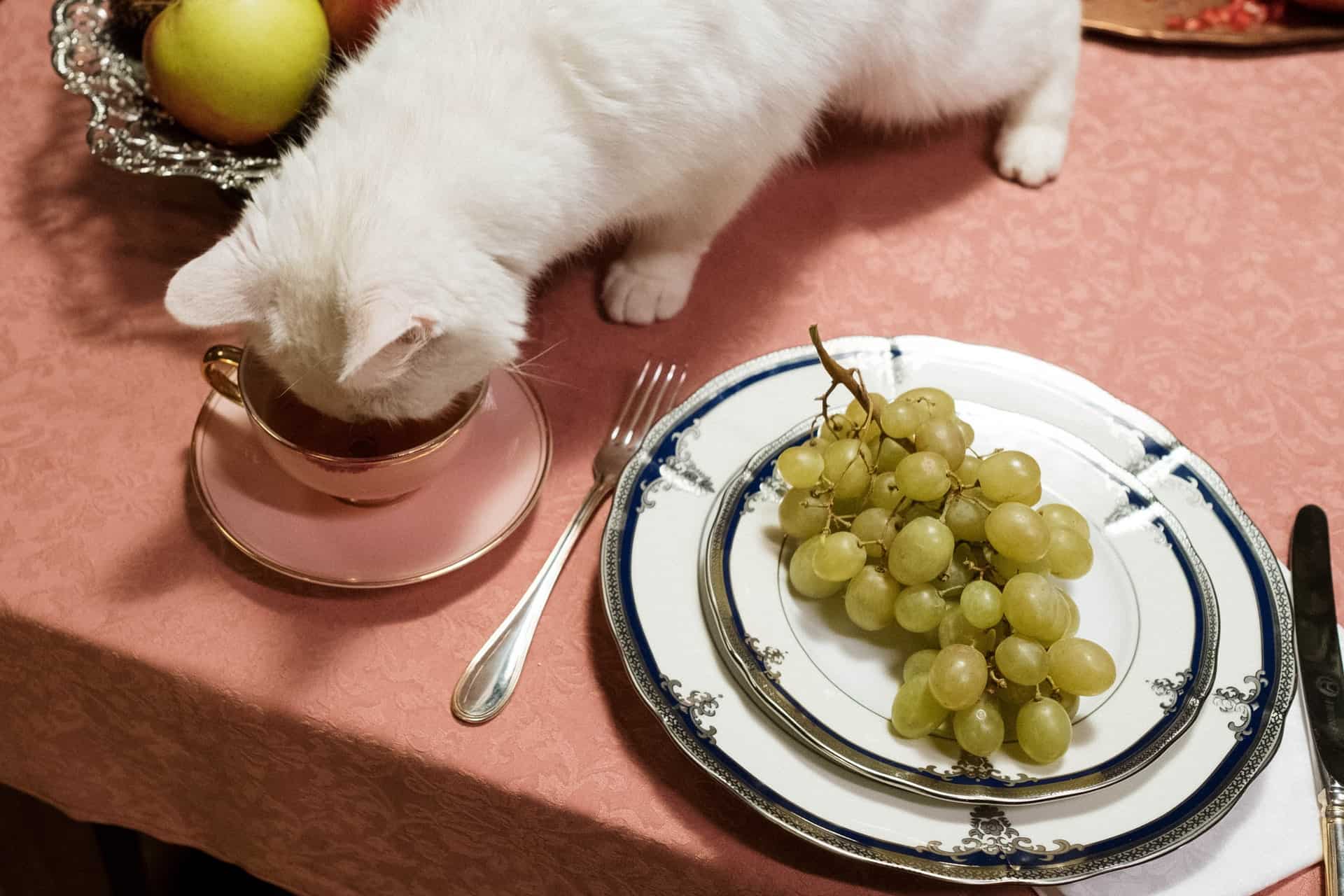
What is catnip tea
Catnip is an herb that you may find under other names like catmint, catnip, Chataire, Menta de Gato, or field balm. You may be familiar with catnip if you are a cat owner. Cats love catnip. If you have seen a cat exposed to catnip you will notice the cat goes a bit crazy for it.
Catnip history takes you to Italy where it is most commonly grown. The scientific name is Nepeta Cataria. Nepeta for the towns in Italy known as Nepete and Cataria may be from the Latin word for cat.
The first people who were the first to use catnip are the Egyptians. This thought was followed by the Romans who used catnip as traditional herbal medicine.
Americans recognized the benefits of catnip around the 18th century. When catnip was first brought to America it was by cuttings. If you know how well mint grows you will realize those cuttings went a long way. Catnip was used in cooking. Native Americans use catnip medicinally to treat colds, sore throats, fevers, and more.
Catnip is known more as an extract or essential oil. Catnip tea is becoming more popular.
Catnip is not only for cats, humans enjoy it as well. Catnip has a slightly green and woody taste.
Catnip is strong. It is common in Central Europe but easily grown in the Northeast as well as Canada. Used as herbal medicine. Catnip is also used as a food flavoring and of course as tea.
When you look at catnip you will notice that it’s got a boxy stem and leaves that will resemble a mint plant. That is because catnip is part of the mint family.
There is a select group that does not like catnip. That group is insects. Insects seem to be repelled by the smell of catnip. Rodents may also avoid the smell of catnip. The year was 2009 when Dupont created an insect repellent to work as well as DEET. The product he used was the oil of Nepeta cataria or, catnip.
Benefits of catnip tea
The main benefit received from catnip is its ability to relax and relieve stress. There are many other benefits to drinking catnip tea. One of the most interesting herbs. Catnip tea can help colds heal faster and ease stomach discomfort. Herbs have benefits that are astonishing sometimes. Knowing what herbs to use for what is what blogs like this one is all about. Enjoying our tea and receiving the health benefits as well.
Catnip is used to treat many things like
- Anxiety – (you’d never know that watching your cat)
- Insomnia – drink a cup in the evening to usher in some calmness
- Headaches – Catnip reduces inflammation and eases headaches
- Arthritis – drink catnip tea before you have a flair up
- Coughs – drinking catnip tea soothes your throat
- Fevers – reduces fevers caused by colds and allergies
- Detox – some catnip tea will help remove certain toxins
- Nervousness – catnip tea has a sedative effect. Soothing
- Digestive issues – drink a cup of tea to relieve stomach upset
Catnip tea can also have diuretic effects. When you are trying to get some sleep and using catnip tea don’t use it right before bedtime. It may cause you to be up and down more than usual.
Catnip tea is calming, the complete opposite of what it does to cats. Catnip contains nepetalactone. Nepetalactone is a chemical that is naturally occurring in catnip. Catnip has a strong aroma. It also has sedative properties like valepotriates found in valerian.
Catnip tea is rich in:
- Flavonoids
- Phenolic acid
- Caffeine acid
- Rosmarinic acid
- Coumaric acid
- Limonese
- Folic acid
- Pantothenic acid
- Sodium
- Suffer
- Vitamin A
- Vitamin B
- Antioxidants
- Nepetalactone
- Thymol
- Pinene
Catnip contains rosmarinic acid. The rosmarinic acid is stronger than vitamin E. These antioxidants in catnip can protect cells against damage. The antioxidants can also reduce the risk of cancer and atherosclerosis. Rosmarinic is also used to treat stomach ulcers and asthma.
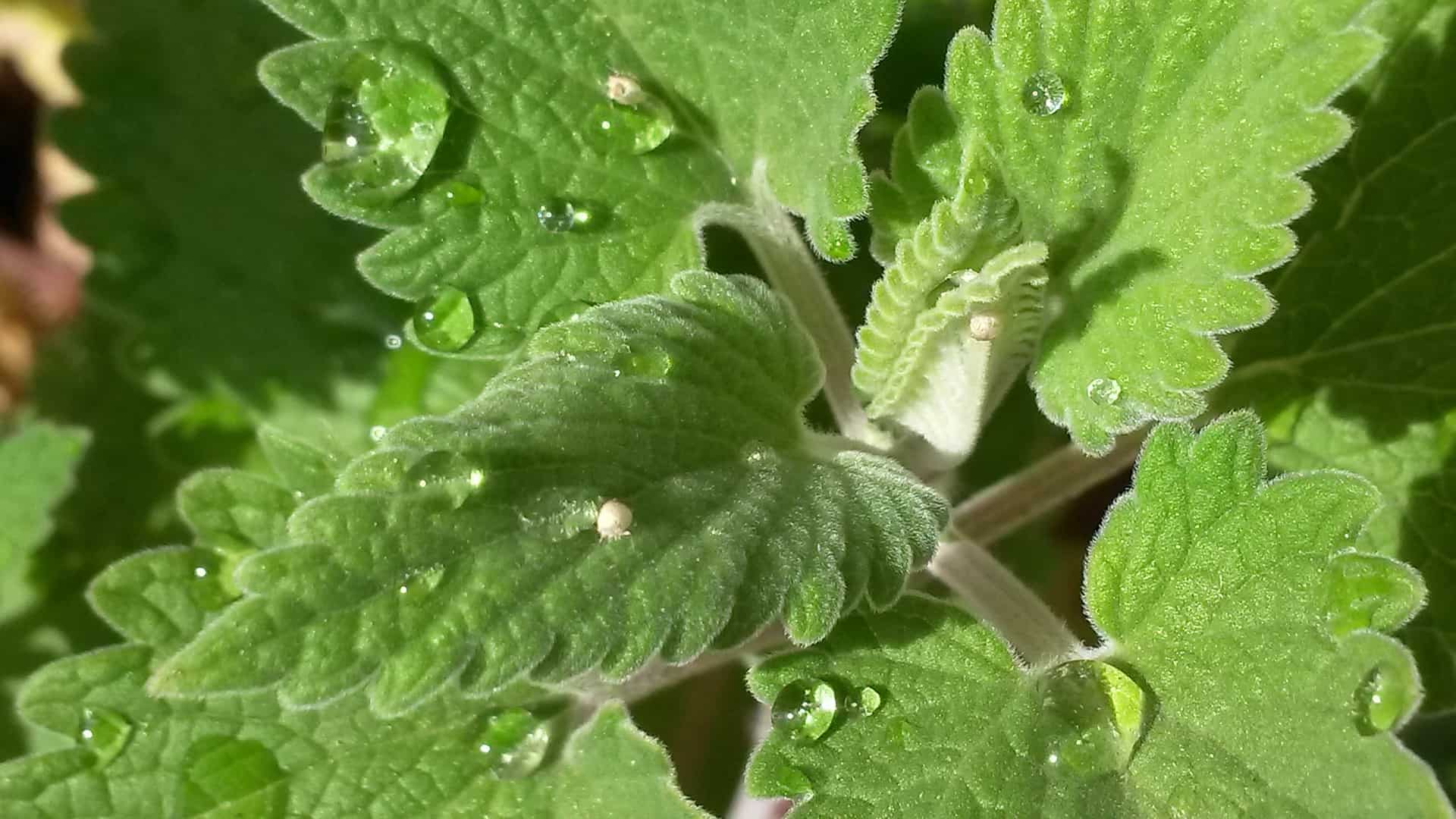
How to make catnip tea
Catnip tea is easy to make.
- 2 teaspoons dried catnip leaves or flowers
- 1 cup boiling water
Using an infuser place the leaves inside the infuser and dip into the cup of hot water.
You may want to add honey, lemon, or lime.
Stir and let steep
The longer you allow the tea to steep (10 minutes or so) the more the catnip tea will taste minty and not so green.
Risks of catnip tea
Catnip tea is not a stimulant. No matter how excited your cat gets. It can cause drowsiness. This is not a deep relaxation but mild.
Because of its diuretic effect on the body, you may want to drink it in the privacy of your home. Or where you are close to a bathroom in case you need to use it. Also, avoid using it during the night so you won’t wake up often.
Catnip tea can cause stomach upset and digestive problems in some people. It May cause headaches as well.
Not for pregnant women or children. May cause uterine contractions. May not be advised for women with PIN (pelvic inflammatory disease).
Some have used catnip for infants to stop the effects of colic but catnip has not been tested in children.
Is catnip tea for cats?
Yes! Absolutely. Of course, “tea” is created in a different way. Cats love catnip. Yes, it does give them a high. No matter how they partake of it:
- Smelly
- Eating
- Drinking
Catnip in any form is safe for most cats. The only problem you may encounter is giving your cat too much catnip tea. Too much then he will become immune to it and its effects.
The nepetalactone is what triggers the intense high feeling for cats. While cats appear to get high from catnip, humans do not have the same reaction. Catnip is safe for both cats and humans
I’ll share with you two of my favorite catnip tea recipes for cats.
Recipe 1
- Place warm water, catnip, and chicken broth in a container with a tight-fitting lid.
- Shake for a couple of minutes
- When the “tea” has a greenish color to it. Serve.
- Serve only ¼ cup of your catnip “tea” for cats at a time.
- The rest you can store in the refrigerator.
- Heat before serving leftover catnip tea for cats.
Recipe 2
- Add catnip to an infuser
- Place in a cup of boiling water
- Steep for 5 minutes (or so)
- Drain into your cats’ dish once cooled
You can also add honey if your cat has a bit of sweet tooth but totally not necessary.
Conclusion
The next time you see a cat enjoying the benefits of catnip remember that you too can enjoy catnip. Just in a different way. I don’t want to see any images of humans rolling around in a pile of catnip.
The benefits of catnip for humans are far-reaching. It’s great to have another herb we can safely enjoy as a tea, in our cup.
Enjoy your catnip tea and make don’t forget a cup for your furry friend, too.

